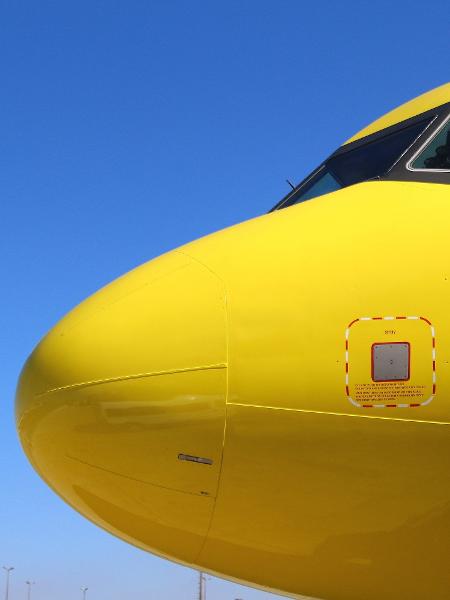Every year, thousands of planes are struck by lightning. It is estimated that more than 27,000 commercial aircraft worldwide are each shot down at least once or twice a year.
Although it worries people and sometimes frightens them, it no longer poses a risk to those who fly. Modern airplanes are designed to be lightning-proof and pass safety inspections every time they happen.
Miley Cyrus’ plane was shot down
Last month, American singer Miley Cyrus announced on her social media account that her plane was struck by lightning.
He was flying from Colombia to Paraguay’s capital, Asunción, but had to make an unplanned landing at Guarani airport near Ciudad del Este due to bad weather after the incident.
The singer showed the moment when lightning struck the plane, and then how it hit a part of the fuselage. There was just a scare and a few hours later the passengers were reassigned to other flights while the plane was checked out.
Protection
Thanks to the Faraday Cage concept, no one inside the aircraft is affected by the electrical discharge of lightning. Simply put, the metal body of the aircraft creates an enclosure around it that conducts electricity and keeps its contents safe.
So the beam is transmitted only from the outside of the aircraft and whoever is inside should only feel the discomfort of glare and (if any) sound.
Even modern airplanes have structures and treatments for it, with the fuselage made of composite materials that don’t conduct electricity very well. In these cases, materials such as carbon fiber in the body are coated with a thin layer of copper, in addition to being painted with an aluminum-containing paint.
One of these places is the nose of the plane, which is not usually made of metallic material, as there are sensors and the plane’s weather radar. If it were metal, it would interfere with the equipment’s signals and therefore rely on wires to transmit electricity to the aircraft’s fuselage and radiate it into the environment.
Need to get off?
Often, when lightning strikes an aircraft, the pilot decides to land the aircraft so that safety checks can be carried out. Team members decide whether it will be possible to continue flying to the destination or whether it will be necessary to ground the aircraft as soon as possible.
The spot where lightning strikes the plane is usually not large and may be the same size as the head of a pen. This is detected by ground maintenance crews who will observe that there is no further damage.
These marks can be, for example, a damaged rivet, a darker spot in the paint, chipping of paint, etc. it could be. Depending on the extent of the damage, the aircraft may continue to fly normally for a while, even if only a small portion of it has been damaged.
Some companies even use camera drones to examine the entire contour of the aircraft, observing any damage in hard-to-reach places.
Plane struck by lightning (but that’s in the past)
In December 1963, the plane carrying Pan Am Flight 214 crashed in a lightning strike, killing all 81 people on board. The Boeing 707 was approaching Philadelphia International Airport (USA) when lightning struck its wing.
The accident report stated that the most likely cause of the accident was the explosion of the fuel-air mixture inside the wing, which could have been caused by lightning.
After this tragedy, some security recommendations have been made, including:
- Installation of static electricity dischargers on aircraft that do not yet have
- Only use Jet A fuel in commercial airplanes as it produces less flammable vapors compared to other fuels
- Replacing parts and systems in fin tanks to avoid the formation of such flammable vapors
Modern aircraft computers are also shielded to avoid any problems. Additionally, pilots tend to avoid areas with heavier clouds where this type of discharge is more likely to occur.
Resources: Oliver Wyman Consulting; Anac (National Civil Aviation Agency), IATA (International Air Transport Association), Inpe (National Space Research Institute), KLM Blog, and the United States National Weather Service.
source: Noticias
Mark Jones is a world traveler and journalist for News Rebeat. With a curious mind and a love of adventure, Mark brings a unique perspective to the latest global events and provides in-depth and thought-provoking coverage of the world at large.
